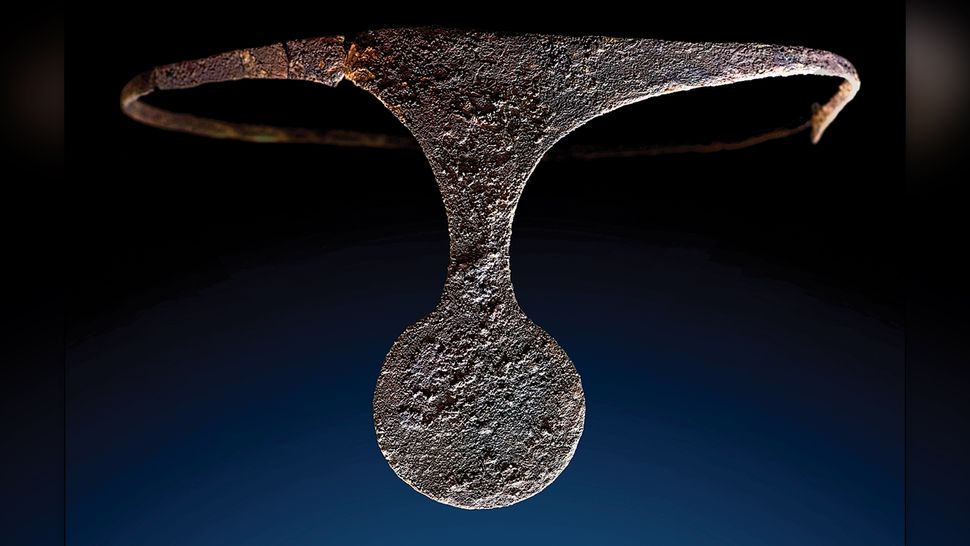'Powerful, maybe even frightening' woman with diadem may have ruled in Bronze Age Spain [View all]
By Laura Geggel - Editor a day ago
This is only the sixth known diadem from ancient Spain.

The silver diadem could have been worn upward or downward, although it was found positioned downward on the woman's head in this burial. (Image credit: Courtesy of the Arqueoecologia Social Mediterrània Research Group, Universitat Autònoma de Barcelona; Antiquity Publications Ltd)
Archaeologists in Spain have discovered "one of the most lavish burials of the European early Bronze Age": the grave of an elite woman wearing a silver diadem in what might be one of Western Europe's first palaces. She might even have been a queen of sorts who ruled over the realm.
The woman's remains were buried next to a man who was slightly older and died a few years earlier, the researchers found. But the man had far fewer and inferior goods in his grave, raising questions about which individual had more power and whether she was a ruler, according to the study, which was published online Thursday (March 11) in the journal Antiquity.
When interpreting such a burial, it's important to have an open mind about the past, said study co-researcher Roberto Risch, a professor of archaeology at the Autonomous University of Barcelona. "Traditionally, in a very male-dominated academia, you would say, 'Oh, she is the partner of him. He was the big guy — he is a little bit older, and if she is the partner, she is just a beautiful woman and she gets a lot of ornaments," Risch told Live Science.
But given that she outlived the man and still received more opulent goods, it's likely that the woman had power of her own, Risch said. "What she is wearing — it's not because of him, because she is alone," Risch said. "There is no more him around. He died before."
Archaeologists have known about this site — known as La Almoloya, in the southeastern region of Murcia, Spain — since the 1800s, when Belgian mining engineers discovered the ruins of a Bronze Age society there. This economically tiered society, known as El Argar (2200 B.C. to 1550 B.C.), was complex; the Argaric people built monumental structures, grew and processed cereals such as barley and wheat, kept domesticated animals, traded with faraway cultures and practiced metallurgy, according to a 2020 study published in the journal PLOS One.
More:
https://www.livescience.com/diadem-bronze-age-burial-spain.html
